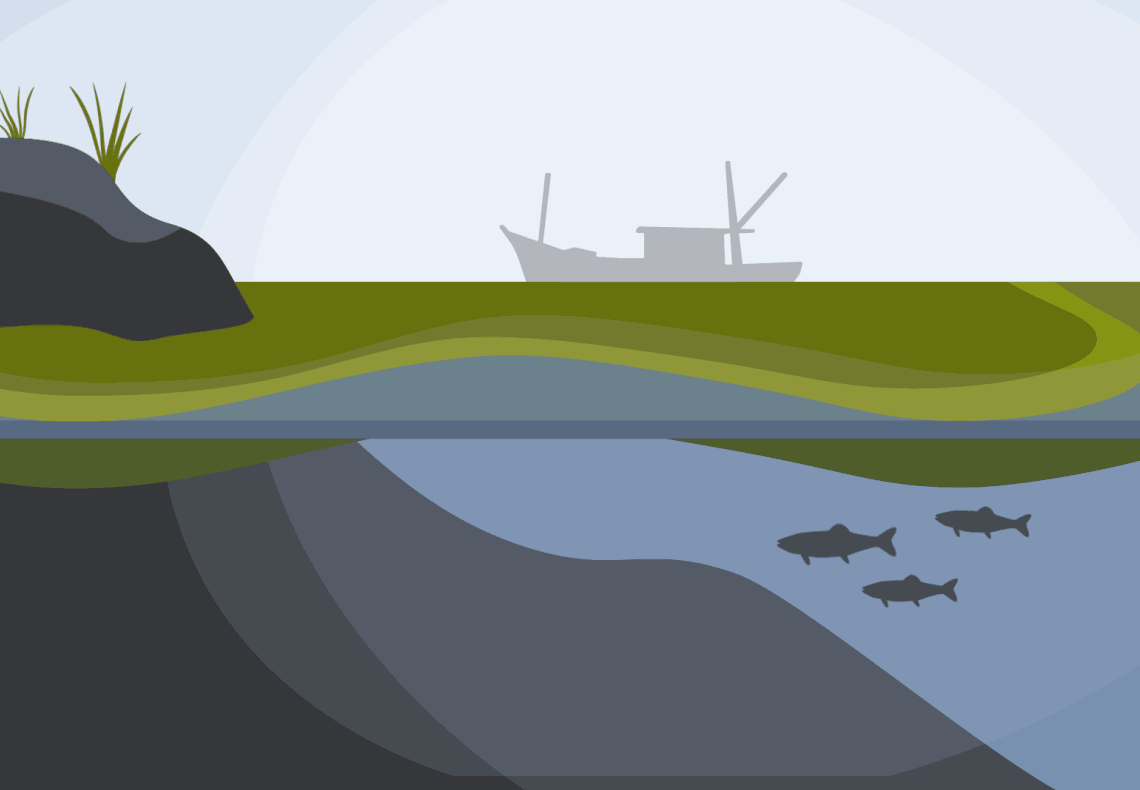
Stone Lab Twitter
I managed Stone Lab’s Twitter account full-time from January 2020 to May 2022, creating content, scheduling posts, and interacting with other accounts on the platform.

Ohio Sea Grant Twitter
I took over Ohio Sea Grant’s Twitter account full-time in January 2020 after the departure of our Digital Outreach Specialist, and managed it full-time until November 2022.

Science on the Shallowest Great Lake
Put-in-Bay teacher Melissa Kowalski brought hands-on Lake Erie science back to her classroom after a week on the U.S. EPA's R/V Lake Guardian.

Nitrogen Trackers
Researchers at Wright State University hone in on the role of nitrogen in harmful algal blooms and toxin production.
Life and Science on the High Seas
Extension educator Jill Bartolotta traveled aboard the NOAA Ship Okeanos Explorer as part of the Teacher at Sea program.

Harmful Algal Bloom Research Initiative Year 4 Report
The 2019 report on the Harmful Algal Bloom Research Initiative includes a project overview and updates from funded researchers.
Ohio Sea Grant and Stone Lab to Host Clean and Safe Boating Day on August 9
“Clean and Safe Boating Day” will take place on August 9 at the Aquatic Visitors Center (AVC) at Put-In-Bay, Ohio.

Ohio Sea Grant and Partners Bring Shipwrecks Information to Four Lake Erie Visitor Spots
The website features 31 shipwrecks, as well as 22 lighthouses and nine maritime museums along the shoreline.
Forecast for Harmful Algal Blooms in Lake Erie 2019
Stone Laboratory and Ohio Sea Grant at The Ohio State University hosted NOAA’s annual HABs Forecast for western Lake Erie on July 11. In addition to the official forecast, the event featured spring nutrient loading and projections along with expert commentary and highlights of recent research efforts and successes.

Power Up
Ohio Sea Grant's Solar Technology Curriculum gives students a look at renewable energy technologies.

Taking Care of Business
Ohio Sea Grant Extension Specialist Joe Lucente helps local economies thrive in coastal communities.
Something For All Ages
Summers on South Bass Island are busy… really busy. More than 800,000 guests visit the island and the town of Put-in-Bay every year as part of their summer vacations, and Ohio Sea Grant and Stone Lab are ready to add just a touch of Lake Erie science and history to the memories tourists take back home.
Teaching Teachers
Ohio Sea Grant has a long tradition of developing curriculum for teachers and other educators. Its first formally funded research project was an education project, and giving teachers effective ways to help their students learn about the Great Lakes has continued to be a cornerstone of Sea Grant’s mission ever since.
Ohio State’s Stone Lab Partners With Ohio Foundations On Field Trip Scholarships
Ohio Sea Grant and Stone Lab, Ohio State’s island campus on Lake Erie, are offering scholarships to school groups from grades 5-12 for a one-day Lake Erie Science Field Trip at the lab on Gibraltar Island.

Community Connections
The Ohio Sea Grant Extension program connects the needs and concerns of Lake Erie communities with the people who can help address those needs, bringing new knowledge to their stakeholders through education and outreach programming and finding new ways to address problems through research and publications.

Round 'Em Up
Northern Illinois University’s Dr. Rich King and Stone Lab’s Dr. Kristin Stanford played an instrumental part in the recovery of the native Lake Erie Watersnake.
Growing, for Science
Stone Lab, Ohio Sea Grant’s research and education facility on Lake Erie, has been a home for researchers studying the lake for over a century. Over the years, upgrades and renovations have made sure that the lab keeps up with modern science needs, but of course there’s always more that could be done to make sure Stone Lab continues to be a resource for everyone studying Lake Erie.

What Are Harmful Algal Blooms?
Harmful algal blooms were all over the news after the Toledo drinking water crises of 2011 and 2014, but what actually causes these algal blooms and why are they problematic? This online fact sheet will provide you with answers about what makes up a harmful algal bloom, why they form, why they're an issue, and what you can do to help prevent them and keep yourself safe.
At the Forefront of Lake Erie Science
Water quality continues to be a top concern for Stone Lab staff and visiting researchers. A state-of-the-art Algal and Water Quality Lab houses water testing for nearby treatment plants, supports research into the lake’s harmful algal bloom problem and offers student research assistants a chance to get hands-on experience in the lab.

Developing Clean Ideas
In the summer of 2014, toxin-producing algae led to the city of Toledo shutting off drinking water for half a million residents. Once the immediate crisis was over, state agencies and Ohio universities came together to address the critical gaps in knowledge about tracking and dealing with harmful algal blooms. With funding from the Ohio Department of Higher Education, the Harmful Algal Bloom Research Initiative (HABRI) was born in 2015.